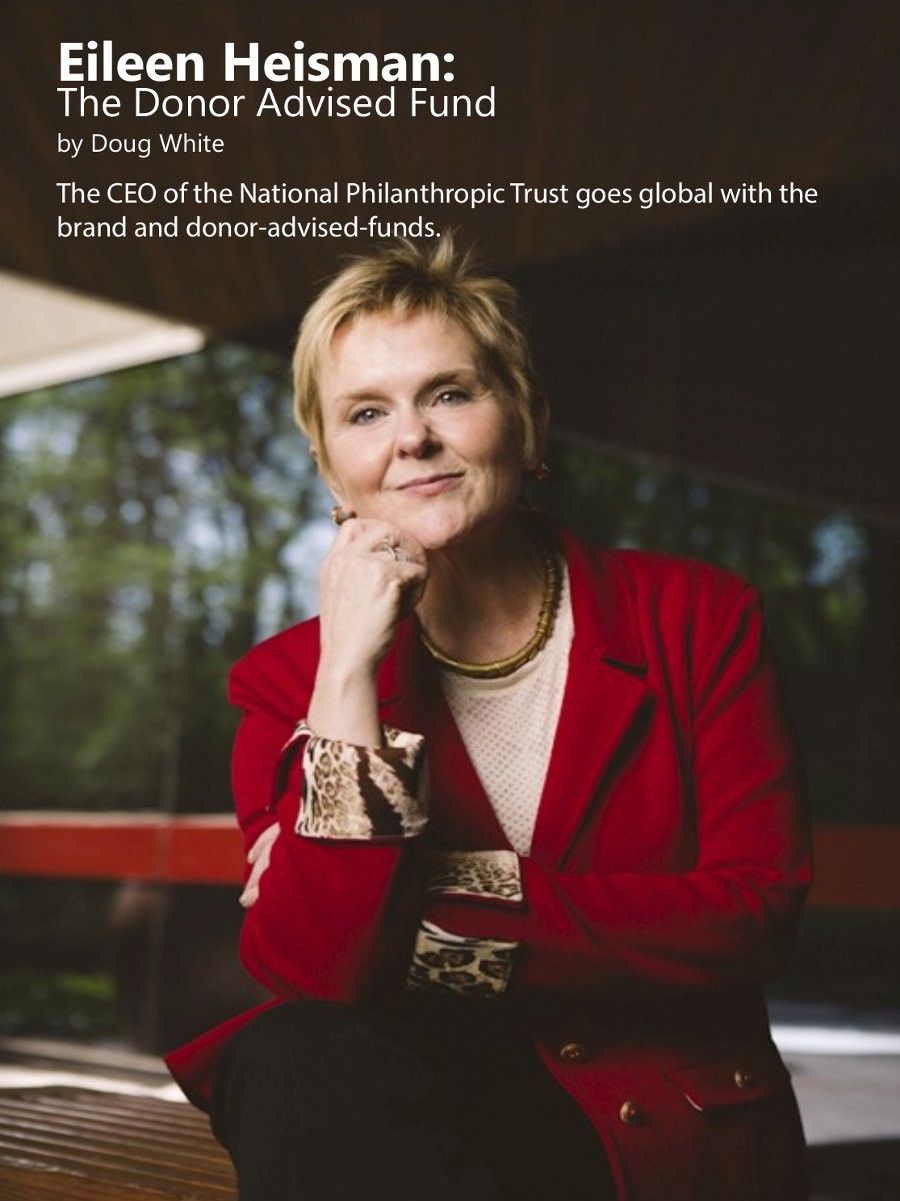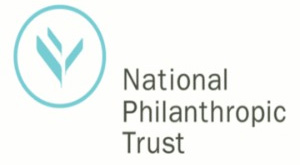



“Charitable giving has a new look,” Time magazine recently reported, “one that is broadening the giving pool and helping keep the dollars rolling into nonprofits even during tough economic times.”
That new look is a method for giving called “donor-advised funds,” or DAFs. This is how it works: A donor opens an account at a “sponsoring organization,” such as a community trust or the charitable arm of a financial services company. While any contributions to the account are immediately tax-deductible, the donor generally has no deadline for disbursing the funds. It’s today’s go-to for philanthropists who aren’t ready to commit their wealth to specific organizations or don’t want the burden or expense of establishing their own foundation. DAFs, reports Giving USA, which tracks the annual growth of philanthropy, “are the fastest growing charitable vehicle in the country.” They have become so popular that they now represent more than $37 billion under management in the United States alone.
Technically, the DAF dates back to 1931, when The New York Community Trust invented the arrangement. However, not much happened for the next 60 years. “People didn’t realize the donor-advised fund model would work,” says Eileen Heisman, president and chief executive officer of National Philanthropic Trust (NPT). But in the early 1990s the Fidelity Charitable Gift Fund received a favorable ruling from a federal appeals court that said DAFs have charitable status, even when they’re under the aegis of an investment firm. Other groups quickly joined in.
Located in the Philadelphia suburb of Jenkintown, NPT, founded by the Pitcairn family in 1996, is today a DAF heavyweight. With more than $1.7 billion in charitable assets under management, NPT ranks among the 25 largest grant-making bodies in the U.S.
Heisman says that DAFs give donors the benefit of professional guidance. “Whether a donor wants to turn an illiquid asset into a gift or create a global grant or a multi-year grant, we hold a mirror up to what the donor wants and reflect best practices in the philanthropic world,” she says. That can include advice on how to structure the gift and outline its goals, as well as ongoing stewardship as donors regularly make their charitable decisions into the future.
But when it comes to how they want their money spent, donors “know what they want to do,” says Heisman. “Donors to DAFs are pretty well informed. They come in with a lot of energy about giving to their causes. They’re engaged philanthropically, many serve on charitable boards, and they’re using us as a way to fulfill their monetary philanthropic goals.”
Still, groups such as NPT do more than distribute alms. “Some people think a DAF is merely a wink for total [donor] control, but it’s really not,” Heisman notes. “Every document clearly states that NPT has the final say over how the money is to be spent. And we reinforce that verbally. We will honor requests that are legitimate, but if you want to go outside things that are legal then we won’t do it.” For example, a gift to an individual from a DAF is forbidden.
Although NPT’s donors are savvy, they still need to be reminded that their wishes might not stand the test of time. Heisman recommends that they include an escape clause in their gift agreements, permitting NPT, usually after a donor’s death, to spend the money on a similar cause if the original intent is no longer possible. “We have the obligation—and undertake the risk—to distribute the money properly,” Heisman says, “and we’ve seen so much that we almost always know more than donors when it comes to structuring the gift agreement. We also tell them that something might be legal now but the laws could change five years from now. Some donors embrace an escape clause in an instant. Others go kicking and screaming. If they never want to change any of their donative intent and if the purpose becomes obsolete, it’s going to be our job to figure something out.”
Congress and the IRS have long struggled with the concept of the donor-advised fund, and in the Pension Protection Act of 2006 Congress did clarify for the first time many definitions and regulations relating to DAFs. Still, the absence of a spending rule worries some legislators. Although foundations are required to spend at least five percent of their assets on their programmatic activities, public charities are not. So, the concern goes, DAFs are nothing more than parking lots where donors can stash money indefinitely and take healthy charitable deductions without actually helping society. The reason the charitable income tax deduction exists is to encourage people to give; the idea is that the foregone tax revenue will help society in ways that government cannot. So legislators might very well think there should be some minimum requirement to ensure that at least some of the deducted donations are actually injected into society’s bloodstream.
But that concern is misplaced, according to Heisman. “Donor-advised funds are actually paying out between 17 and 24 percent, and that doesn’t include overhead, as is the case with foundations,” she says. The National Philanthropic Trust conducts a lot of research on the model throughout the country, perhaps the most of any organization. “The issue about us being these warehouses is not warranted,” she adds. “Money is pouring out the door. We encourage philanthropy.” She sees no need for a required minimum annual payout. In fact, it could be counter-productive. “If you impose a five percent minimum, it may very well become a maximum in people’s minds. It actually could hamper giving. Why would you take a group of entities that are paying 20 percent and say you have to give out five percent per account when the aggregate is humongous?”
Heisman sees her biggest challenge, and perhaps NPT’s biggest opportunity, as one of shaping the future. While there’s no way private philanthropy can ever replace the government’s role in helping society, it can seed some interesting projects. She mentions NIH, the National Institutes for Health, which is a government agency. “NIH won’t fund anything without preliminary findings from smaller experiments, and private philanthropy often funds those smaller experiments. And not just in medicine. Private philanthropy can provide seed money for new ideas to emerge in many areas. “

A favorite teacher of Heisman’s once talked to her about “ideas coming from the fringe of society, and that when they mature they become mainstream.” Philanthropic money can be used to attack the root cause of a problem, not just the symptom. “You want to be funding the stuff on the fringe,” she says. “Some of it will become mainstream.” The women’s rights movement is another example. “There was a time,” Heisman says, “when women’s shelters were considered fringe organizations. Rape assistance? That was really radical. Now, nobody thinks they’re radical, but at the time it was difficult. Things shift and then people don’t even remember.”
When she talks with donors, she says she always tells them “not to be afraid of taking a risk. Some of the most creative thinking in the social sector is by people who are in emerging organizations. If the idea doesn’t mature, it doesn’t mean you were a failure. Maybe that idea could be the next big change in the social sector.”
At NPT, the next big change is expansion overseas and the organization is soon going to be offering the same services to donors outside the U.S. that it does domestically. To be sure, Great Britain’s philanthropic landscape is different from America’s. The federal government in the US as well as many state governments has passed legislation to actively promote charitable donations to a degree that few other nations have. It’s still unknown whether the British will take to the American approach, but it’s worth finding out. As Heisman counsels her donors, “Always take risks.”